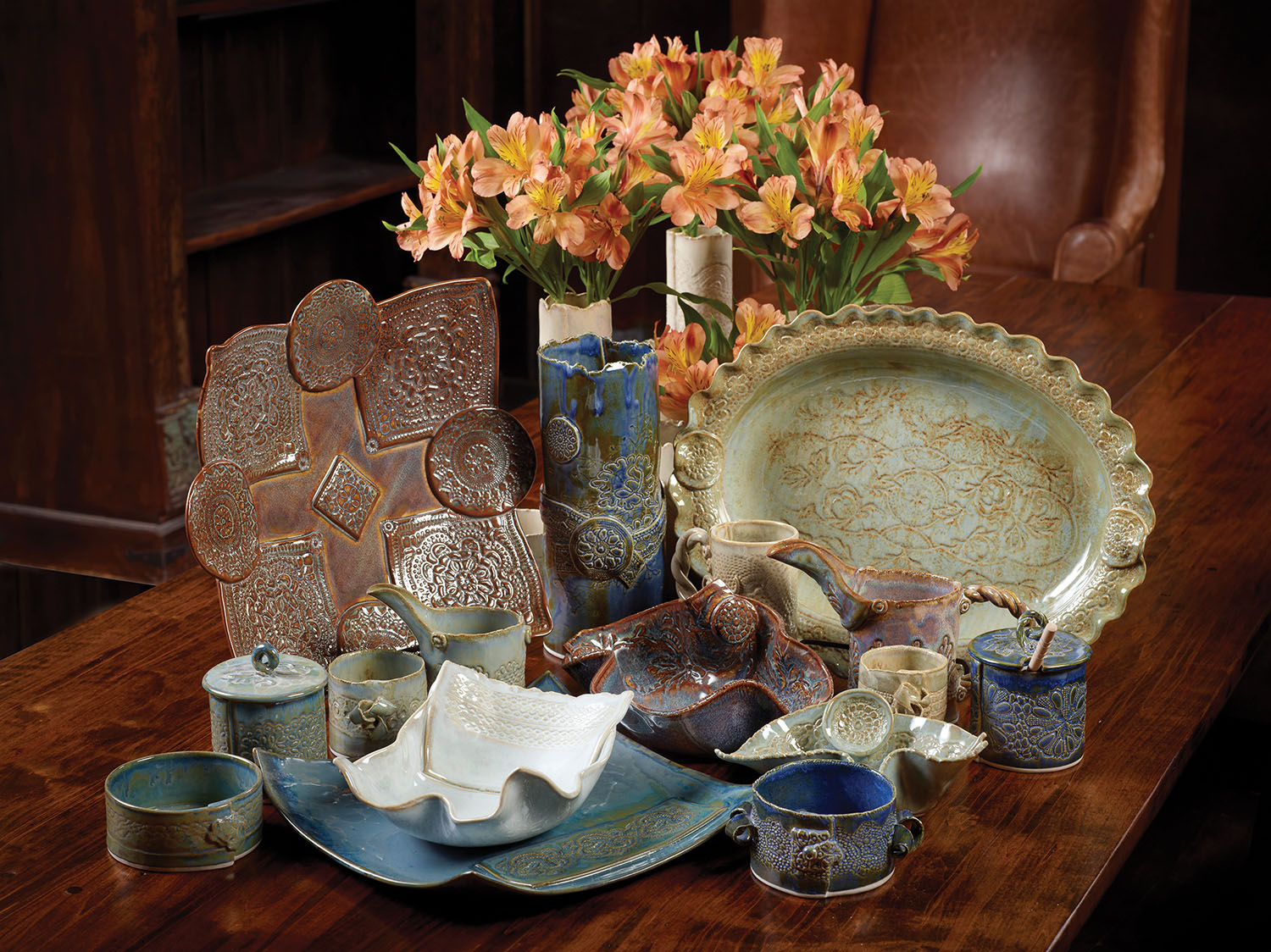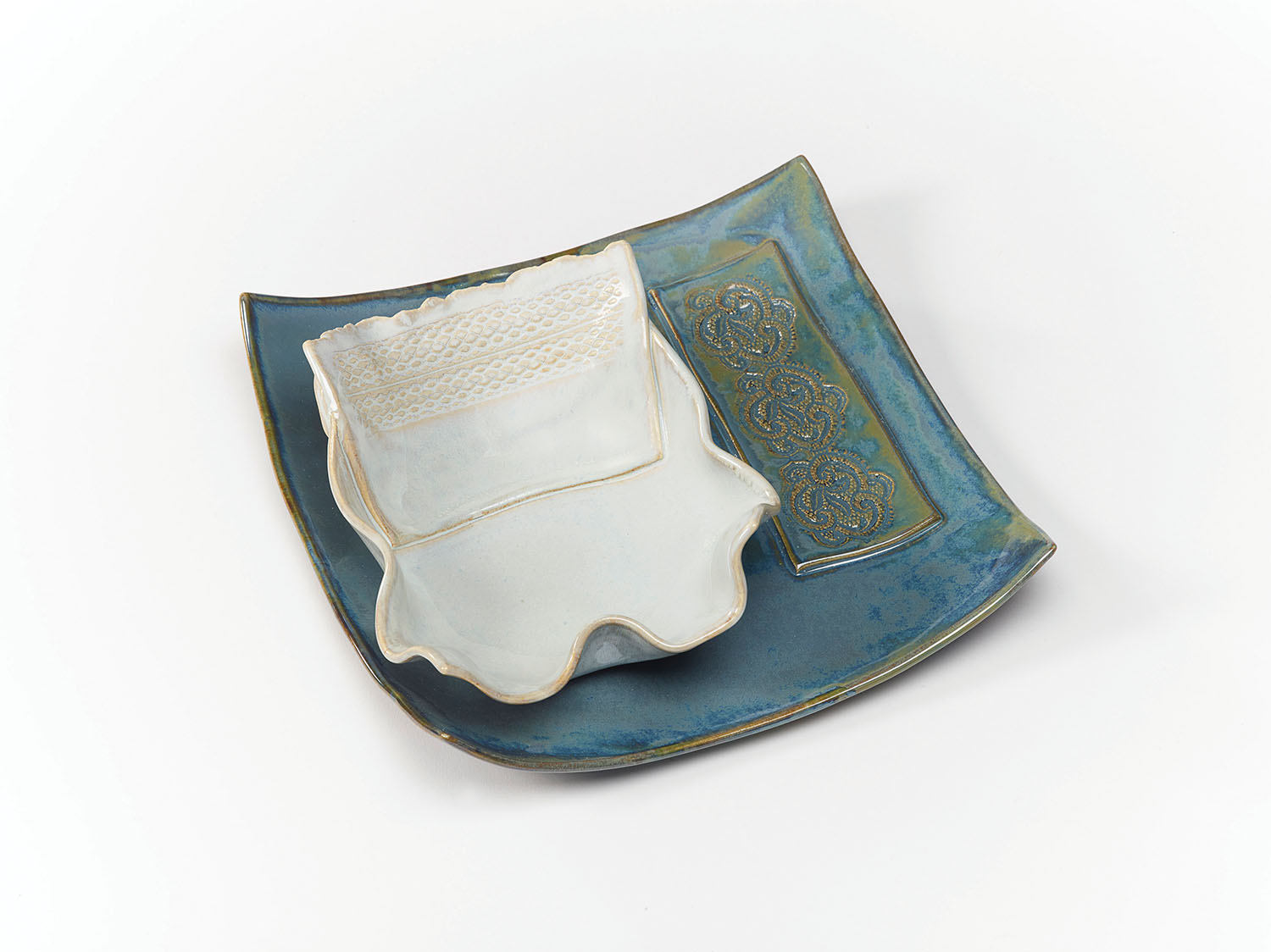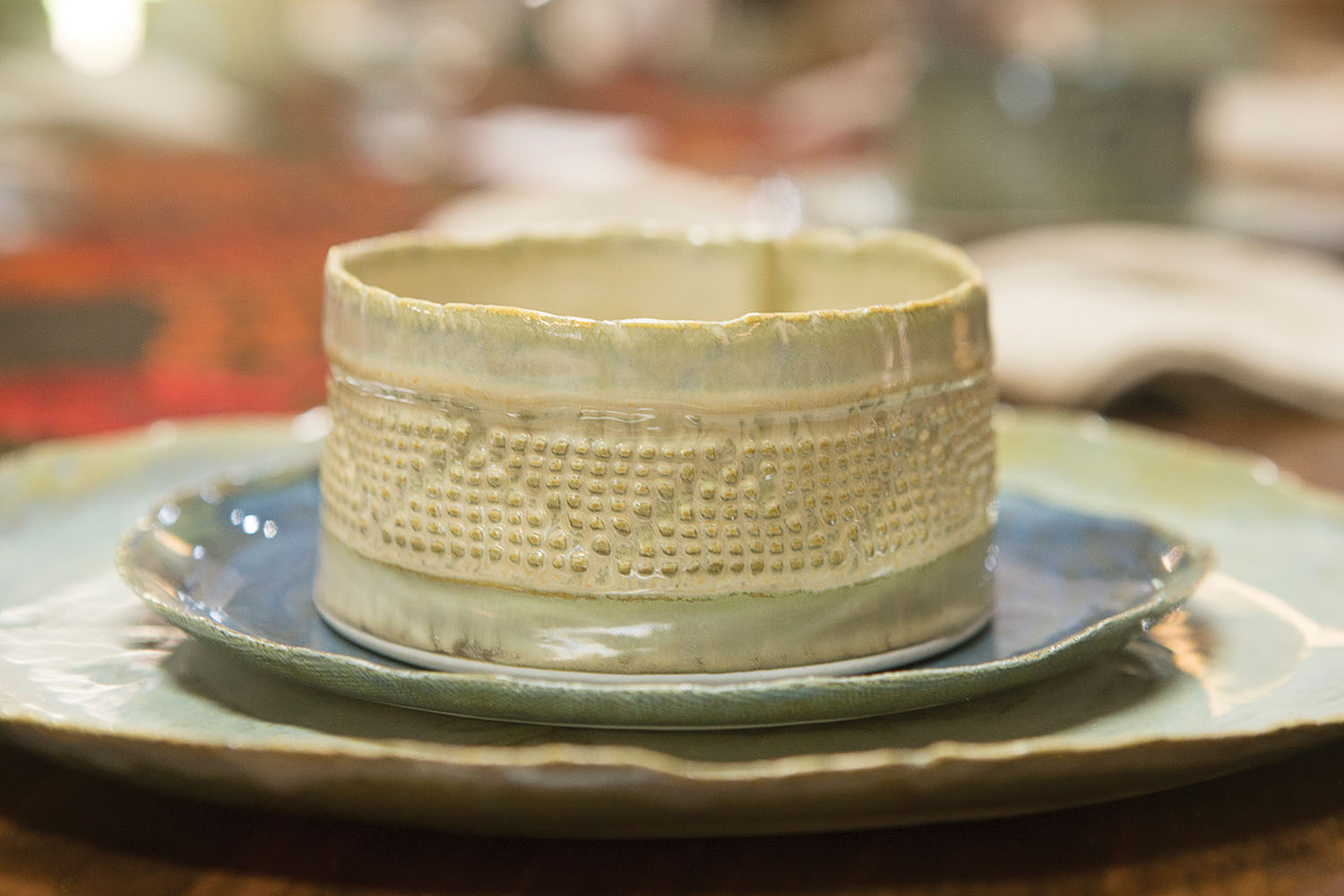
Portrait by Matt Rose
Michael Hofman took a lot of clay classes in college because, he jokes, the potters had the best parties. “They were always walking around with coffee cups in hand. One day, I picked one up and realized that it wasn’t always coffee in those cups.” He quickly adds, “But seriously, I love clay. I love it for its plasticity and its readiness to take on any form.”
Hofman’s graduate program at Ohio State University was called Expanded Arts. “It encompassed many nontraditional mediums. I was doing all sorts of wild and wacky things,” he recalls. Eventually he moved to San Francisco, where he worked for catering companies and also earned money remodeling houses. After a few years, he was hired to manage a nonprofit photography gallery, and from there, went on to run a bed-and-breakfast for five years, “and finally a gallery on Sutter Street.”

But as housing costs continued to skyrocket in the Bay area, he began searching for a new town, eventually deciding on Asheville. “I moved here sight unseen,” says Hofman. “That was 16 years ago, and it seems like just yesterday.”
He continued doing catering and remodeling work in Asheville. Although every job he’s ever had involved a fair bit of creativity, he says he never gave serious thought to making a living as an artist. And then, in 2006, clay came back into his life. He was presented with an opportunity to purchase a clay studio.
“For some strange reason, I said yes.”
Hofman is now nationally known for embedding lace patterns in the porcelain serving dishes, vases, and other pieces he creates. He describes it as “an old folk-art technique that I learned from some ‘old folks.’”

Photo by Steve Mann
He begins the process by rolling out porcelain clay on a table, “just like making a pie crust.” When it has achieved the correct thickness, he lays the lace on the clay and presses it in. “The lace is removed immediately, as clean as when we started,” he says.
The vessel is formed into the desired shape and dried very slowly. “This allows it to dry evenly and not warp or crack,” he explains. It gets glazed, then fired twice. “It takes about a month to go from my worktable to the display table in the gallery,” he reveals.
While Hofman maintains an extensive inventory of lace, he also creates pieces using lace his clients bring in — tatting, embroidery, crochet, anything three-dimensional. “Several brides have had us make their bridesmaids’ gifts using their wedding-dress lace.”

Photo by Steve Mann
He also makes wedding china, using lace the bride and groom have borrowed from their respective family members. “Then, whenever they set their table, it’s the history of the two families coming together. Each dish can represent a different loved one.”
One young woman brought him a tatted collar belonging to her recently deceased grandmother, who had often worn it to church on Sundays. Using just the one lace piece, Hofman was able to make “many different pieces” — commemorative vessels that the client gave to family and friends.

Photo by Steve Mann

Photo by Matt Rose
Michael Hofman Studios, 111 Roberts St. in the River Arts District, Asheville. Open Tuesday through Saturday, 10am-4pm, or by appointment. Hofman holds his Annual Winter Sale on Saturday, Feb. 2, 10am-4pm. He will be part of Asheville Art Museum’s spring reopening show (see ashevilleart.org for updates). For more information, call 828-232-1401 or see livelifeartfully.com.